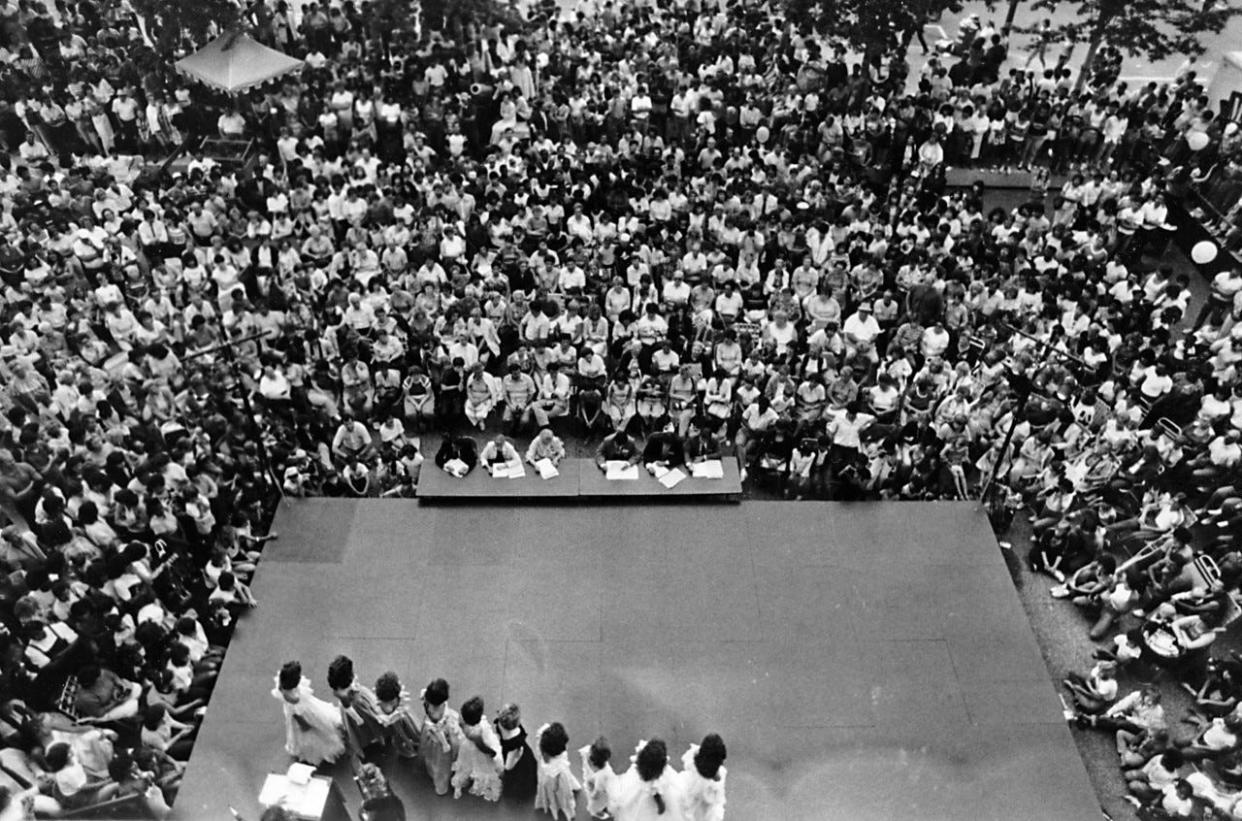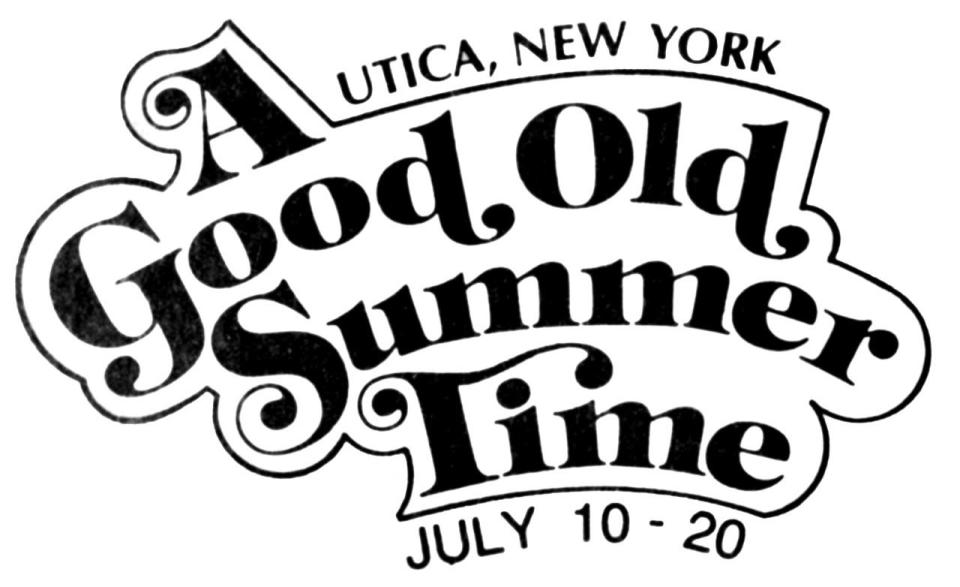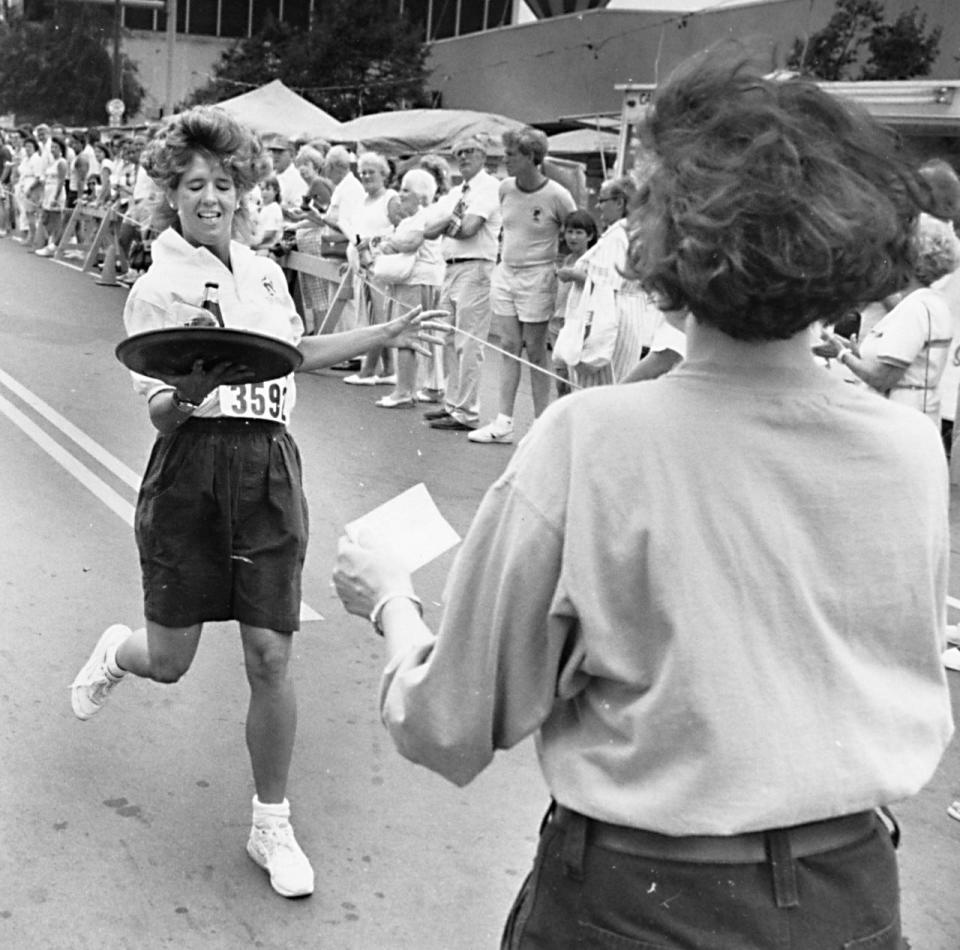Remember Miss Greater Utica Pageant, waiters racing down Genesee Street? Welcome to 'Good Old Summer Time'

Tim Trent sat doodling at his desk one summer day in 1980, trying to come up with a short, catchy name for Utica’s 3-year-old, fast-growing summer festival. It wasn’t easy.
After all, how did one describe in three or four words an event that had begun in July 1977 in downtown Utica as a three-day gala with food booths, carnival rides, a farmers’ market and arts and crafts shows and had evolved into a two-week, fun-filled, old-fashioned celebration with dozens of events, many food booths, hundreds of organizers, participants and volunteers and had brought statewide notice to the region as a centerpiece of the “I Love New York” tourism promotion?
Then one day during lunchtime, Trent, still searching for a name, was riding in his car listening to music on his car radio when the disc jockey began to play an oldie — “In the Good Old Summertime” — written in 1902 by George Evans (music) and Ren Shields (lyrics).
Suddenly, a lighted bulb flashed over Trent’s head. The festival committee wanted a name that would express the spirit of the festival and its many events, but would not diminish any one event. Trent was convinced that the Evans-Shields song did just that. Festival Chairman Brian Gaetano and committee members agreed.
So, beginning July 1980, Utica’s summer festival became known as “A Good Old Summer Time.”
More: A 35-foot candy counter. Two floors of shopping. Whatever happened to Woolworth in Utica?
Gaetano and Robert Bankert, president of the Greater Utica Chamber of Commerce, said at the time that the festival had begun in 1977 to give downtown Utica a boost. “The whole idea in 1977 was to get people to come downtown and take a look around,” Bankert said.
Genesee Street was closed from Elizabeth Street south to Blandina Street for three days, and the area was dotted with food booths, arts and crafts exhibits and plenty of live music.
A spectacular sculpture show — by Utica’s Sculpture Space Inc. — at City Hall featured noted artists from throughout the Northeast and Florida. Downtown merchants joined in the fun and had “Crazy Day” sales on the sidewalk in front of their stores and indoors, too.
As the festival grew more popular, the goal expanded to not only getting people downtown, but to develop some kind of community spirit among them.

By July 1980, the festival not only had a new name, but its umbrella had spread to include traditional summer events in Utica and Central New York — including the sidewalk art show on the Munson-Williams-Proctor Institute campus, Earle Reed’s Boilermaker Road Race (1,300 runners in 1980 plus the first ever wheelchair division), tours of Utica’s marshlands, a concert by Frank Galime’s Jazz Ensemble, a public dance at Union Station featuring the Jimmy Dorsey Orchestra that attracted more than 2,000 people, the Jenny Golf Tournament at Twin Ponds and later Higby Hills, bocce tournaments, wine tasting parties, bicycle races, Sesquicentennial Limited train rides in 1982 through the Sauquoit Valley (operated by the Mohawk Valley Chapter of the National Railway Historical Society to help Utica celebrate its 150 years as a city) and the Heersborn Seekbach Youth Band from West Germany (sponsored by Utica Maennerchor).
Also, each year, Syd Oberman (Mr. Downtown Utica) headed a project that distributed “A Good Old Summer Time” commemorative dinner plates depicting area landmarks, such as Union Station and the Observer-Dispatch building.
Each year, “A Good Old Summer Time” grew larger, attracting thousands of people to the region, including nationally known performers — singers Ray Charles and Melissa Manchester to the Stanley Performing Arts Center, Woody Herman and his Thundering Herd to Charlie G’s Restaurant in the CharlesTown Factory Outlet, racing super star Bill Rodgers to the Boilermaker Road Race and many more top names.
Two of the biggest attractions each year in the 1980s were the Miss Greater Utica contest usually held in the State Office Building Plaza (in the rear of the building and attracting up to 5,000 spectators) and the race featuring waiters and waitresses from area restaurants (sponsored by the American Lung Association of Mid-New York).
Miss Greater Utica winners in the 1980s included Tricia Collins of New York Mills; Karen Soltys of Utica; Nicole Blatt of Whitesboro; Angela Marie Malacari of Utica; Colleen Barry, a student at New York Mills High, and Jene Nappi of Utica. In the early 1990s, winners included Jennifer Calenzo of Utica and Lynn Gorczynski of New York Mills.
The rules for the waiters and waitresses were not complicated: the racers, dressed in their restaurant uniforms, had to carry an opened bottle of Matt’s beer and a goblet of water on a tray along a half-mile downtown route. The runners who spilled the least amount of beer and water and ran the course in the fastest time won. Winners through the years included Sandy Morton, from Lily Langtry’s; George Karathanas, from the Sheraton Hotel restaurant; Dominick Aiello of Holland Patent from Mr. Steak; Herb Engert of Herkimer, from the Whiffletree Inn in Ilion, and Lynne Bifora, from the Prospect Inn.

Bed races also were popular and drew large crowds. Team members pushed a bed along a route in the Bagg’s Square area. One or two persons were allowed to ride on the bed while others just pushed it as fast as they could. In 1983, a bed pushed by employees of Matt’s Brewery defeated teams from the House of Good Shepherd, MVCC Graphics and Wolfe News.
By the mid-1980s, “A Good Old Summer Time” no longer was a downtown Utica event. It now included events in counties Oneida, Herkimer, Madison, Otsego, Chenango, Fulton, Hamilton, Montgomery, Schoharie and Broome. It also included events under the Leatherstocking, New York umbrella and Honor America Days in Rome.
Perhaps it got too big for by the early 1990s, many events left “A Good Old Summer Time” and took charge of their promotions once again. Some, though, continued to promote themselves as a “Summer Time” event.
We haven’t the space to name all the events and volunteers who made “A Good Old Summer Time” so successful in the 1980s and early 1990s, but among them were Brian Gaetano, Tim Trent, Earle Reed, Patricia Endorf, Henry Morehouse, Ann Johnson, Diane Abbey, Lyle Bean, RoAnn Maggiolino, JoAnn Longo, Ralph Eannace Jr., Paul Vitagliano, Claudia Hartz, Be Denemark, Doug Preston, Dick Mattia, Wanda Robertson, Shirley Scialdo and James Kehoe.
Observer-Dispatch editors once tried to come up with a word to describe “A Good Old Summer Time” during its heyday. They tried “stupendous” … “zowie” … “unbelievable” … and “super.” They finally gave up and wrote that nothing seemed to fit a description of the festival. No words in the dictionary seemed to do it justice. So they concluded: “Instead of a new word to describe the festival, just leave room under the ‘G’s’ in your next dictionary for ‘Good Old Summer Time.’ Maybe that’s the best way to describe something indescribably wonderful.”
Whatever Happened to …? is a feature about Utica's haunts of yesteryear and is based on our archives. Have an idea for a Whatever Happened to... feature? Email Frank Tomaino at ftomaino221@gmail.com.
This article originally appeared on Observer-Dispatch: What happened to 'A Good Old Summer Time' event in downtown Utica?

